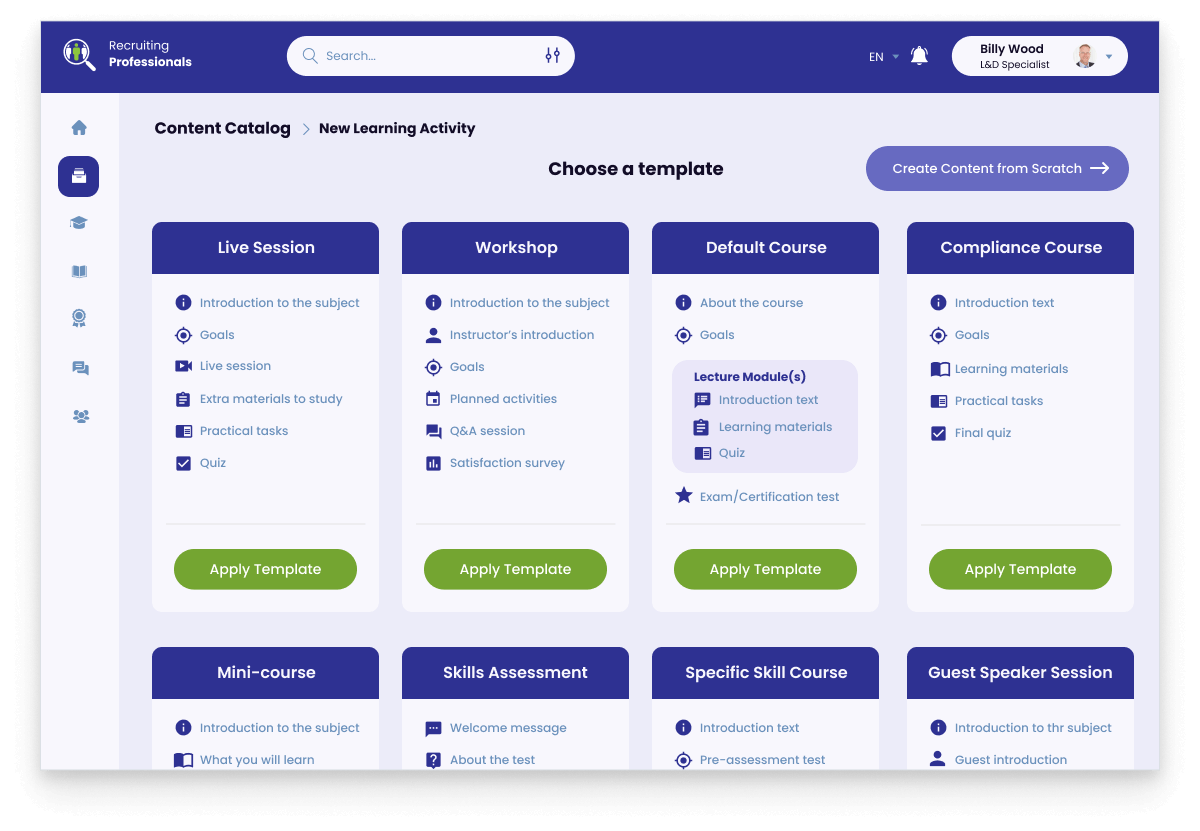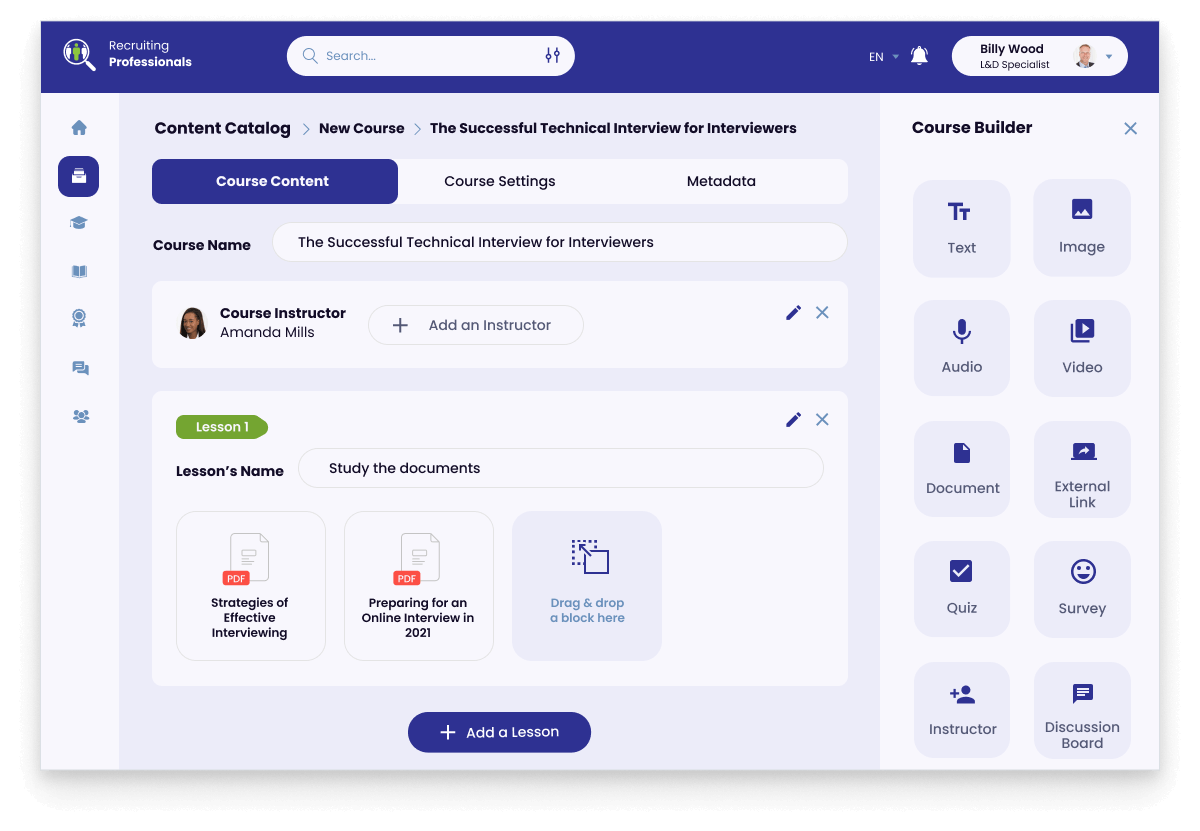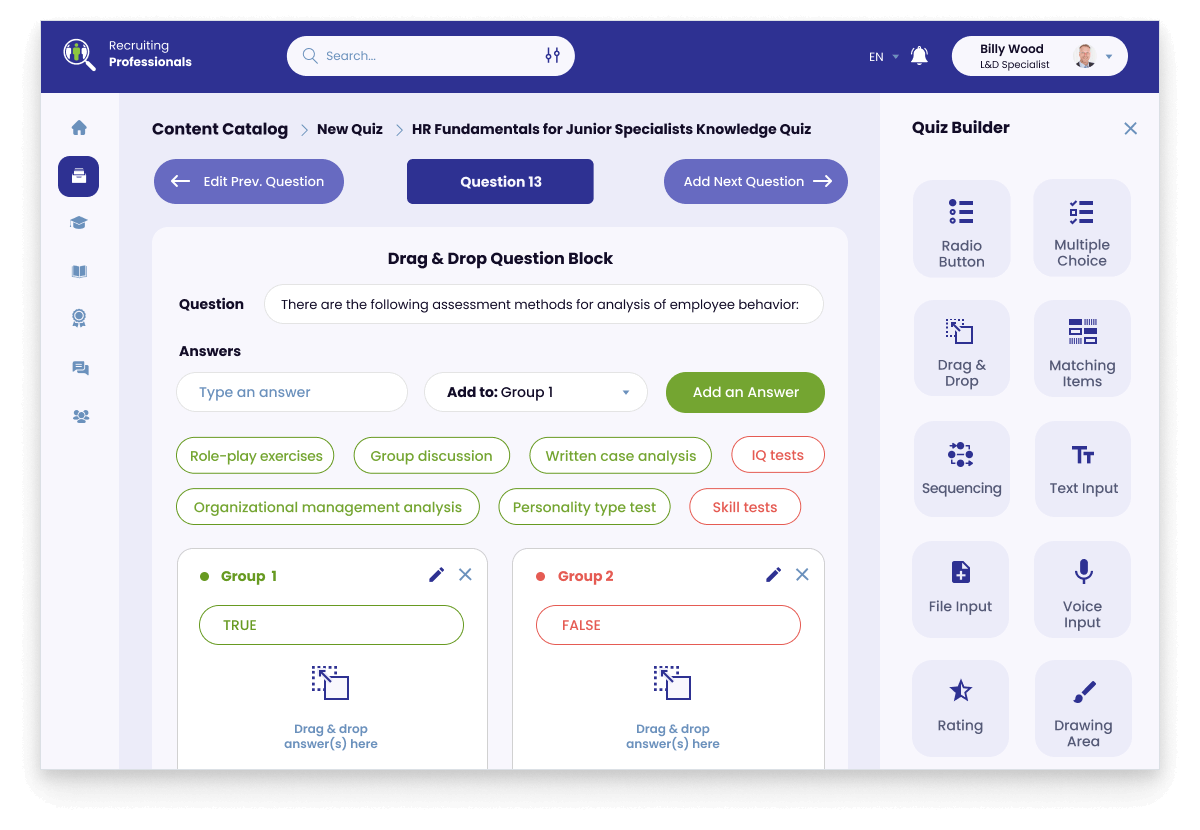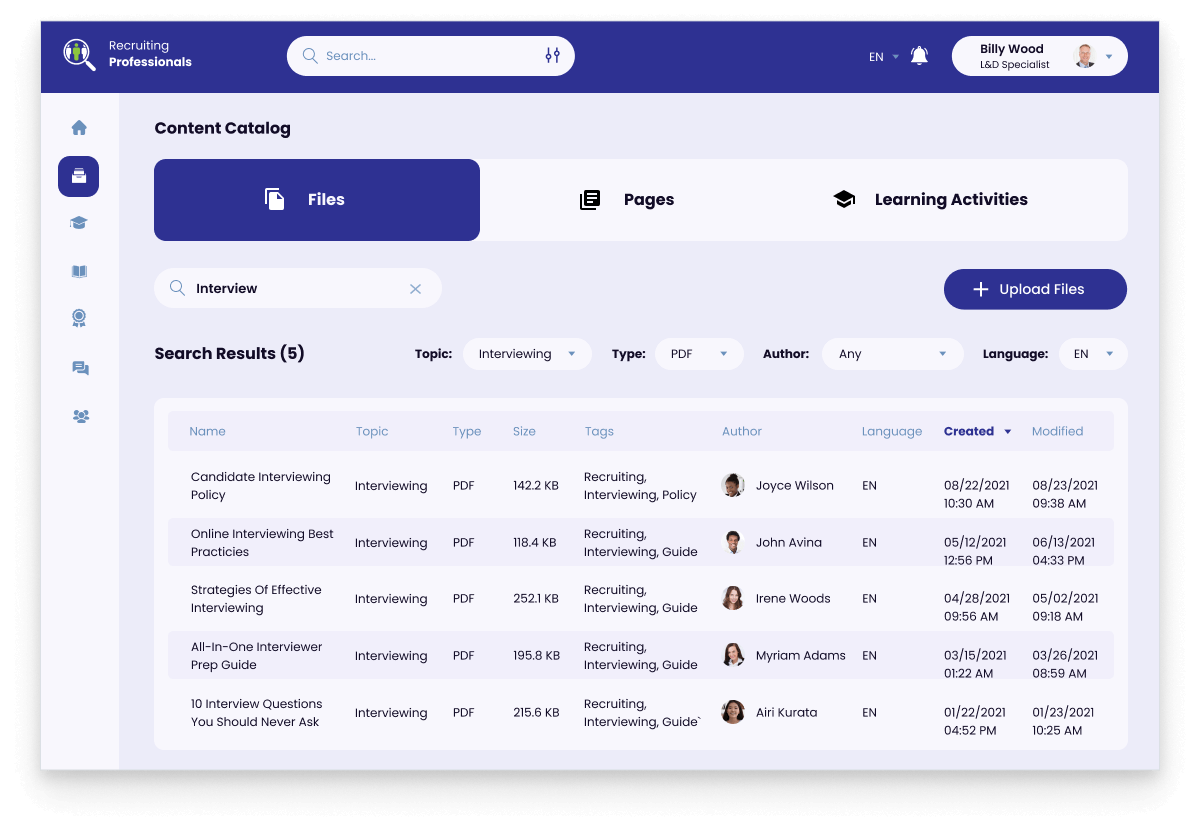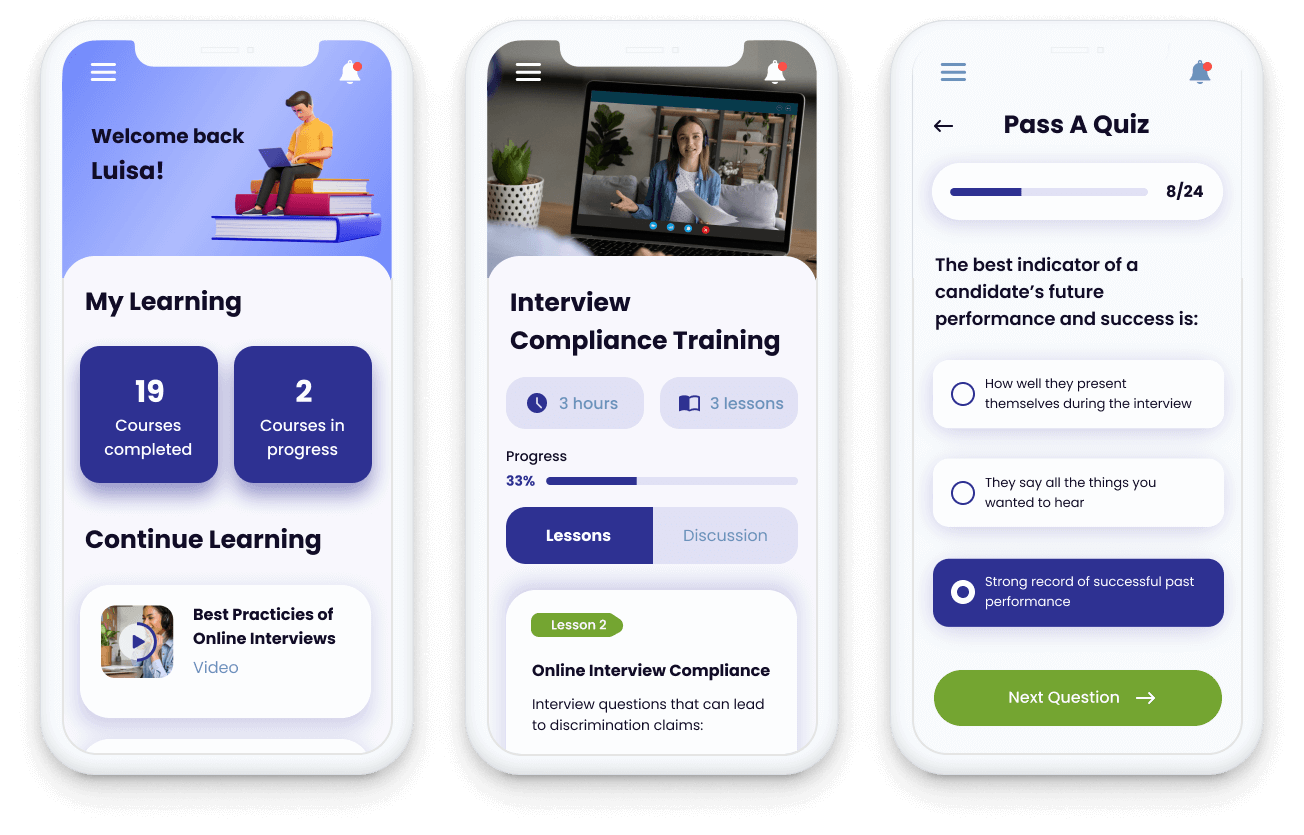Learning Content Management System
Features, Platforms, Costs
With 14 years in development of content management systems and 10 years in delivering eLearning software, ScienceSoft offers consultancy and implementation of learning content management systems (LCMS).
Learning CMS in a Nutshell
A learning content management system is used by instructional designers to handle all activities related to eLearning content, including authoring, storing, publishing, auditing, replacement, deletion, localization, content analytics, and more.
LCMS Architecture
Based on ScienceSoft's experience in eLearning implementation projects, we provide an example of a typical LCMS architecture.
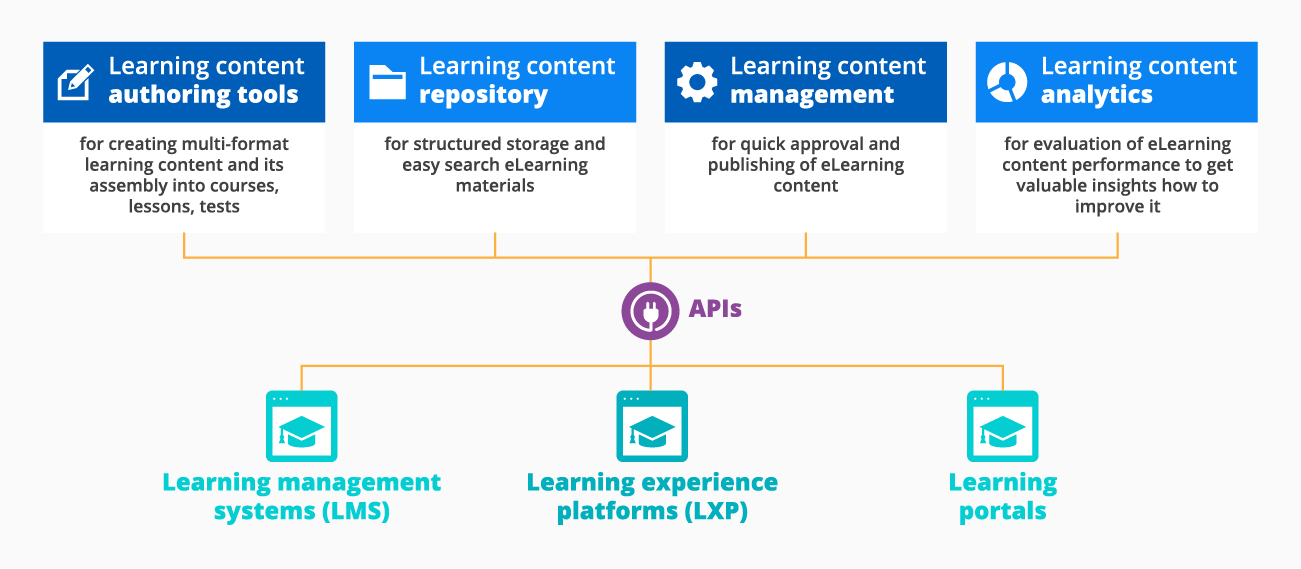
Learning content developed by instructional designers and subject matter experts using content authoring tools is stored in a content repository that supports multiple content formats. Then, the learning content is delivered to learners via integrations with learning content delivery solutions like LMS, LXP, eLearning portals, and more.
Key Learning CMS Functionality
At ScienceSoft, we deliver tailored LCMS solutions depending on a customer's eLearning needs. Below, we outline the LCMS features commonly requested by our clients.
eLearning content creation
- Support of multiple types of content (text, audio, video, images, VR content, etc.).
- Content templates and content reuse.
- Creating eLearning content with various types of learning interactions (e.g., drag-and-drop, fill in the blank, matching, multiple choice, sequencing).
- Content assembling into courses, lessons, exams.
- Authoring tools compliant with technical requirements (e.g., SCORM, AICC).
- Real-time collaboration on content.
eLearning content storing and management
- Centralized content storage.
- Metadata tagging.
- Searchable content repository.
- Content review workflows.
- Permission-based access to content, content versioning and audit trail.
- Content retention and deletion policies.
- Content translation and localization support.
eLearning content delivery
- Multi-format (Word, PowerPoint, PDF, HTML, and more) export of eLearning content.
- Content filtering by languages, roles, regions, and other aspects to adapt content to specific audiences.
- Accessibility on mobile devices.
eLearning content analytics
- Dashboards on the number of learning content page views, course activity and completion rates, time spent per session, preferable devices for accessing the eLearning content (PC, tablet, mobile phone),
- Dashboards on the number of users accessing the eLearning content depending on users’ location, department or region.
- Course activity tracking.
- Content use/reuse reporting.
- Learner engagement and satisfaction with content.
When Custom Learning CMS Is the Best Fit
ScienceSoft recommends custom learning content management system when you need specific eLearning features (e.g., non-linear multistep content approval workflows), extra eLearning content security, unique branding. What’s more, custom LCMS can help you reduce TCO in the long run due to saving money on regular license fees required by LCMS products.
You should consider custom LCMS implementation when you need specific integrations, for example, with custom search platforms that extend search capabilities of your LCMS due to features like a built-in crawler.
Should You Opt for a Custom Learning CMS?
Take our short quiz and find out which solution – custom or platform-based – is your best option.
Do you require functionality that market-available CMS platforms commonly lack (e.g., learning gamification elements)?
Do you have unique content creation and delivery needs (e.g., a complex non-linear publishing workflow)?
Do you plan to use advanced technologies, such as AR or VR, to create and deliver learning materials?
Do you need your learning CMS to be compliant with SCORM?
Do you plan to create multi-lingual learning content?
Do you want custom branded design of UX and UI?
Tell us more about your needs
Please answer at least three questions to get results.
Market-available CMS will work fine for you
ScienceSoft can help you select the most fitting platform and tune it to your requirements and processes.
Either option is potentially viable
In your case, it’s not obvious if the benefits of custom software outweigh its development challenges. We offer to do a thorough analysis of your requirements and conduct a feasibility study to give you an informed conclusion.
Custom learning CMS is the winning option for you
As the next step, ScienceSoft can help you plan your custom CMS and estimate its cost and development timeframe.
Custom learning CMS is the winning option for you
As the next step, ScienceSoft can help you plan your custom CMS and estimate its cost and development timeframe.
LCMS vs. LMS
Both LCMS and LMS provide features like learning content management and compliance with eLearning technical standards. However, these systems have different target audience and offer different capabilities for learning content authoring and eLearning management.
Different and common features of LCMS and LMS
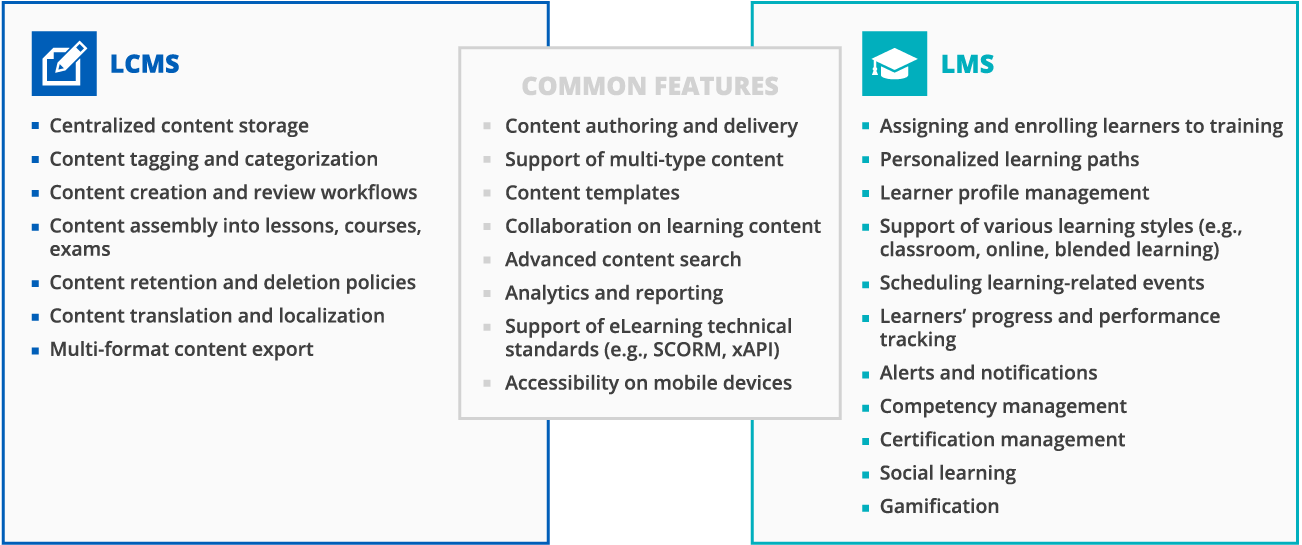
Recommended LCMS Integrations
ScienceSoft recommends integrating LCMS solutions with relevant enterprise systems to enable centralized eLearning and improve the quality of employee training and development.
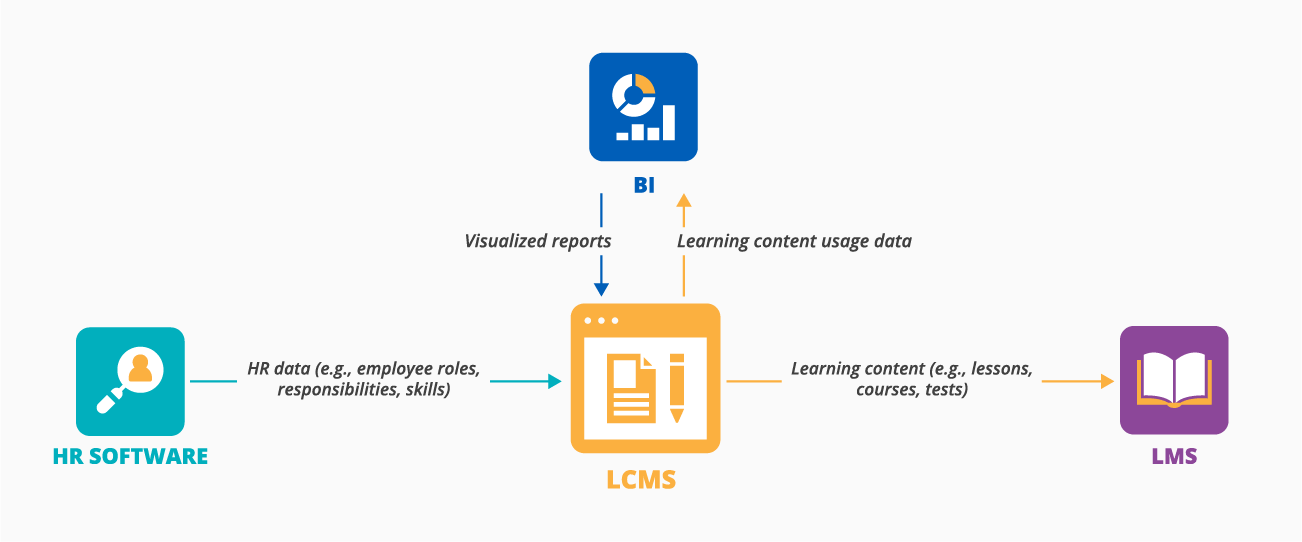
- LCMS + BI - to enable insights on how to improve eLearning content based on collecting multiple metrics, such as course completion rates, preferred eLearning device (e.g., PC, tablet, mobile phone), and more.
- LCMS + LMS - to deliver digital content created in learning content management system as part of organized eLearning adapted to various learning styles, with personalized learning paths, scheduled events, competency mapping, and more as well as adapt learning content in LCMS based on the changes of learning needs (e.g., shifting from online learning to blended learning).
- LCMS + HR software - to offer personalized learning content to employees based on their roles, responsibilities, and skills.
Factors that Determine Learning CMS Success
Relying on ScienceSoft's experience in content management solutions and eLearning development, our experts have defined important factors, which if covered, help bring robust learning content management software to customers.
|
|
Highly intuitive authoring tools that enable quick and easy creating of eLearning assets and assembling them into courses, tests, and other eLearning units. |
|
|
Compliance with widely accepted technical standards like SCORM and AICC to ensure the learning content created in LCMS will be compatible with any compliant LMS. |
|
|
Support of adaptive learning – eLearning delivery customized to learners’ specific needs due to personalization, diversity of languages and content formats, and more. |
|
|
Mobile-first approach to enable users to access learning content at any time and at any place. |
LCMS Costs and ROI

Developing a learning content management system with core features like templates, real-time collaboration on eLearning content, permission-based access, mobility, and eLearning content analytics may cost from $22,000 to $55,000.
Want to know the cost of your eLearning solution?
Key financial outcomes
The average annual ROI for a learning content management system is around 50–100%.
Platforms We Recommend for Building Robust Learning CMS
The key platforms ScienceSoft uses in LCMS implementation projects are as follows:
SharePoint
Best for: SMEs and enterprises
summary
Rating: 4.21/5 (3,000+) by Software Advice (Gartner)
Key strengths: OOTB integration with Microsoft 365; search by metadata and full text.
Cautions: Obligatory customization due to non-compliance with SCORM out of the box and the lack of built-in tools for creating complex educational content like interactive videos, maps and sliders.
Features
- Reusable templates.
- Content governance.
- Co-authoring.
- Automated workflows (e.g., content approval).
- Versioning and audit trail.
- Reporting and analytics.
Pricing
$12.50-$57 user/month (including Office apps)
WordPress.org
Best for: Mid-size and large businesses
SUMMARY
Rating: 4.55/5 (12,000+) by Software Advice (Gartner)
Key strengths: Free 55,000+ plugins and 5,000+ UI themes, ease of use (e.g., drag-and-drop course creation, two-click course publishing).
Cautions: Running many plugins at the same time may bog down the system, leading to performance and compatibility issues.
Features
- Authoring course pages, lessons, quizzes, assignments.
- Learning progress tracking.
- Learners’ analytics.
Pricing
Includes costs of a domain name ($12/year) and hosting costs ($2.95–$49.95/month)
Drupal
Best for: International companies
SUMMARY
Rating: 4.23/5 (300+) by Software Advice (Gartner)
Key strength: Many languages are available out-of-the-box, a flexible taxonomy system useful for handling large amounts of content.
Cautions: Steep learning curve, non-intuitive interface, basic coding skills are required to manage the platform, third-party modules may hinder the solution’s performance.
Features
- 46,000+ add-ons and 2,900+ UI themes.
- Creating and managing various content types including text, video.
- Content templates.
- Built-in translation capabilities for content and UI.
- Built-in SEO tools.
Pricing
Free but has many paid add-ons
LCMS Development with ScienceSoft
Having 10-year experience in developing IT solutions for eLearning, ScienceSoft leverages mature IT processes to bring you solutions for streamlined learning content management:
Custom LCMS consulting
- Analyzing learning content management needs.
- Defining an optimal LCMS feature set.
- Advising on a fitting platform or a technology stack.
- Suggesting useful integrations (e.g., LMS, HRMS, BI).
- Choosing an LCMS implementation methodology.
- Drawing an LCMS implementation project plan.
- Elaborating on UX and UI strategies.
Custom LCMS implementation
- Eliciting learning content requirements.
- Determining the optimal LCMS platform or a tech stack.
- LCMS architecture, UX and UI design.
- End-to-end LCMS development or configuring a platform-based LCMS.
- Integration with enterprise systems or third-party tools, e.g., HR software.
- Quality assurance.
- User adoption and training.
- Post-implementation support and evolution.
About ScienceSoft
ScienceSoft is a global IT consulting and custom software development company headquartered in McKinney, Texas. We provide companies with custom learning content management system consultancy, development, support and evolution services. Being ISO 9001 and ISO 27001 certified, we guarantee high-quality IT services and security of our clients’ data.


